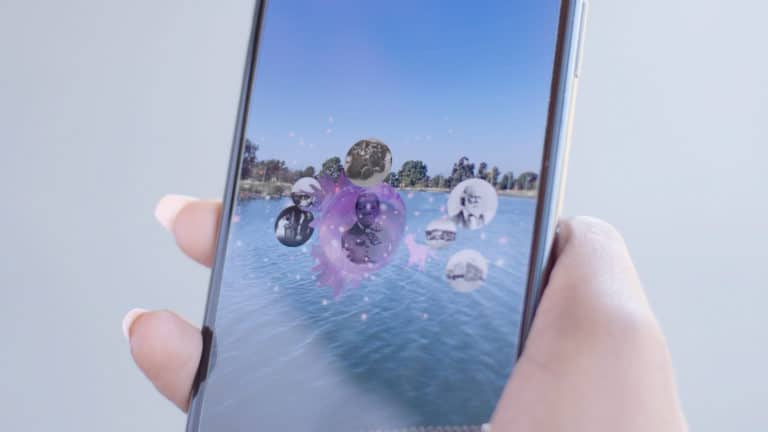
In 2016, as “Pokémon GO” grabbed a diverse set of users’ attention and broke the barrier between the real world and our screens, researchers evaluated the app’s success and explored ways of applying it to environmental conservation.
Later that year, professionals released the first Oculus headset, normalizing virtual reality (VR) in the gaming world. Scientists also explored using VR to stimulate ecological awareness and minimize adverse climate change impacts.
Through their research, they discovered four methods utilizing AR and VR to help save the planet.
The Difference Between AR and VR’s Effects
Augmented reality technology combines one’s camera, phone screen, and computer system, generating real-life visual enhancements overtop the real world. AR creates minor environmental and visual alterations, helping users experience a nearly authentic visualization.
Virtual reality, unlike AR, eliminates this connection to the physical surrounding environment. VR also uses a headset instead of a screen to immerse the user in the imagery. Users can control the VR environment using gloves and sensors.
Scientists are using both technologies to enhance climate awareness and expand prevention projects. They may utilize AR and VR in the education, entertainment, and construction sectors, promoting conservation and reducing ecological degradation.
1. Developing an Understanding of Climate Change’s Effects
Some VR professionals are simulating environmental experiences, helping users view the adverse effects of climate change. One project, called “This Is Climate Change,” transports individuals to the far corners of Earth where rising temperatures have significant ecological impacts. Users may experience wildfires, famine, deforestation, and droughts, exposing them to the direct environmental impacts deriving from emissions.
Another project, simply called “Tree,” transforms the user into a rainforest tree. The VR experience allows individuals to develop from seedlings, facing climate change’s limitations along the way. Forest fires, clear-cutting, soil depletion, and erosion all impact vegetation’s stability.
“Greenland Melting” is another VR project exploring the enhanced greenhouse effect on glaciers and icecaps. It places users on various glaciers, exposing them to mass depletion and the effects on local marine life. When individuals experience significant climate alterations through VR, they are more likely to reduce their emissions and ecologically-degrading actions.
2. Minimizing Transportation Emissions
AR and VR can directly minimize environmental degradation by reducing greenhouse gas emissions. For example, almost half of Americans went to a movie theater in 2019. The amount of transportation emissions associated with entertainment-related trips significantly contributes to atmospheric pollution.
Professionals expect consumers to begin streaming films on smartphones and VR headsets in the future. The convenience and quality provided by the advanced technology will reduce entertainment-seeking outside the home and bring transportation emissions down. Individuals may also simulate travel experiences and destination-based meetups using VR, reducing flying for destination vacations and business purposes.
3. Supporting Smart Cities
Reality-defining technology may also support the construction and functionality of smart cities around the world. Smart cities use Internet of Things (IoT) technology to enhance urban efficiency and safety and minimize environmental impacts. The system connects all devices to a unified data network through 5G technology.
Smart cities plan on using AR and VR to enhance their general capabilities. Urban areas can use the technology to improve the health care system, offering virtual therapy and monitoring remotely. Professionals may additionally use AR and VR to enhance disaster preparedness.
The technology can offer real-time information overlays during storms and other disasters, improving residential safety measures. Smart cities may also connect their technology to autonomous water sensors, notifying individuals of significant flooding or other life-threatening events.
4. Planning Sustainable Infrastructure Development
Professionals can also minimize environmental effects using AR and VR in sustainable construction. When President Biden took office, he established a goal of improving the efficiency of America’s infrastructure while minimizing atmospheric pollution. Construction workers can rely on visual enhancement technology to plan projects.
Individuals can walk through a floor plan using an AR or VR device, identifying errors or possible limitations and sourcing early solutions. Professionals may also create a virtual walkthrough utilizing the technology, helping potential investors experience the project and increasing their willingness to provide funding. When contractors use AR and VR tech, they can decrease material and energy waste in the building stage, minimizing pollution.
Future Technological Advancements
AR and VR engineers are always improving these advanced technologies. One of the newest applications for these devices is in the environmental conservation sector. Previously, systems required users to distribute external sensors throughout a room to track their VR movements. The industry is rolling out inside-out tracking to eliminate external sensors and expand remote and mobile uses.
Similarly, devices previously relied on compatible computer and cabled connections, decreasing a user’s mobility. Now, engineers are minimizing the barrier by building the computing power directly into VR headsets. As technology continuously advances, more industries may utilize reality-defining devices, supporting resource preservation.
 April Miller is a senior writer at ReHack Magazine and editorial contributor at AR Insider. She specializes in VR/AR, IoT, and business technology. See her work here and follow her @rehackmagazine.
April Miller is a senior writer at ReHack Magazine and editorial contributor at AR Insider. She specializes in VR/AR, IoT, and business technology. See her work here and follow her @rehackmagazine.

